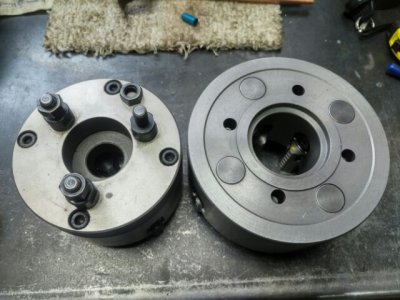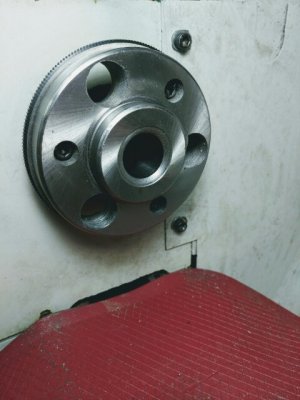DPittman
Ultra Member
Hey guys,
I want to turn a back plate for a new 6.25" four jaw chuck for use on my 10x22 lathe.
The only way I have of holding such a big piece is my 8" faceplate. I'm thinking I will mount the blank in the faceplate and turn the backside to the required lathe spindle dimension. I will also make the necessary oddball bolt mounting studs on that side at the same time. I then will be able to take the blank off and mount directory to lathe spindle to finish the other side to accept the new chuck. Does this make sense? Any suggestions?
I attached a picture of existing 5" chuck back plate and the new bare 6.25" chuck.
Don
I want to turn a back plate for a new 6.25" four jaw chuck for use on my 10x22 lathe.
The only way I have of holding such a big piece is my 8" faceplate. I'm thinking I will mount the blank in the faceplate and turn the backside to the required lathe spindle dimension. I will also make the necessary oddball bolt mounting studs on that side at the same time. I then will be able to take the blank off and mount directory to lathe spindle to finish the other side to accept the new chuck. Does this make sense? Any suggestions?
I attached a picture of existing 5" chuck back plate and the new bare 6.25" chuck.
Don


